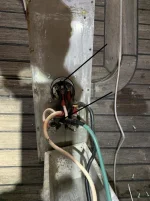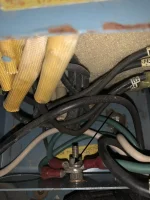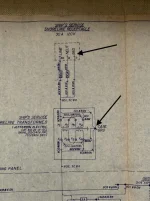Photolomy
Legendary Member
- Joined
- Jun 29, 2018
- Messages
- 1,069
- Status
- OWNER - I own a Hatteras Yacht
- Hatteras Model
- 53' MOTOR YACHT (1969 - 1988)
Tim, where is the transformer wired in at? Before the power panel or after? I would expect before and as close to the shore hookup as possible. Are the two hookups (port and starboard) just both wired directly to the transformer (with fuses of course)?




